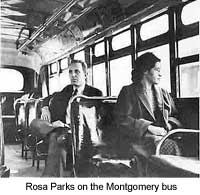five primary documents
The jim crow laws

This website talked about the jim crow laws that created segregation between whites and blacks. This picture above shows that white people and colored people had different drinking water fountains. Not only did they have different drinking fountains but Amferican americans and white americans had to go to different schools, eat at different restaurants and use different facilities.
Old anti-Jim crow poster

This website talked about how the Jim crow laws affected africans americans.
"
Jim Crow was more than a series of rigid anti-Black laws. It was a way of life. Under Jim Crow, African Americans were relegated to the status of second class citizens. Craniologists, eugenicists, phrenologists, and Social Darwinists, at every educational level, buttressed the belief that Blacks were innately intellectually and culturally inferior to Whites. Pro-segregation politicians gave eloquent speeches on the great danger of integration: the mongrelization of the White race. Even simple children’s games portrayed blacks as inferior people."
It also taked about if someone didnt follow the laws they were beaten, jailed, or worse.
Jim Crow Laws

This picture shows an african who protesting to end the jim crow laws and on the right a white american who supports the jim crow laws. This website talks about how the laws were state and local laws in the united states that discriminated aganist blacks. The name Jim crow isnt a person, the name comes from an old song named "jump Jim Crow"
"Seperate but equal"
This website talked about the Jim crow laws and the phrase "seperate but equal". It wasnt true because African americans and white americans were not equal. Black schools and white schools were not equal, white schools got more supplies, funding and more education. The U.S military was segregated until integrated by Harry S. Truman after World War II.
 "On December 1, 1955, Parks wearily refused to relinquish her seat to a white man. She was arrested, fingerprinted, and incarcerated. When Parks agreed to have her case contested, it became a cause célèbre in the fight against Jim Crow laws."
Thurgood Marshall
"On December 1, 1955, Parks wearily refused to relinquish her seat to a white man. She was arrested, fingerprinted, and incarcerated. When Parks agreed to have her case contested, it became a cause célèbre in the fight against Jim Crow laws."
Thurgood Marshall

This is a picture of Thurgood Marshal.
In 1954, he convinced the Court that 'separate but equal' public school classrooms were unconstitutional (Brown v. Board of Education).
In other cases, Marshall defended the rights of the individual and affirmed legal protections for women, children, prisoners and homeless persons. He said the Constitution was the best weapon against Jim Crow laws and the equal protections clause was not complicated.
"Equal means getting the same thing at the same time and in the same place," he wrote.










